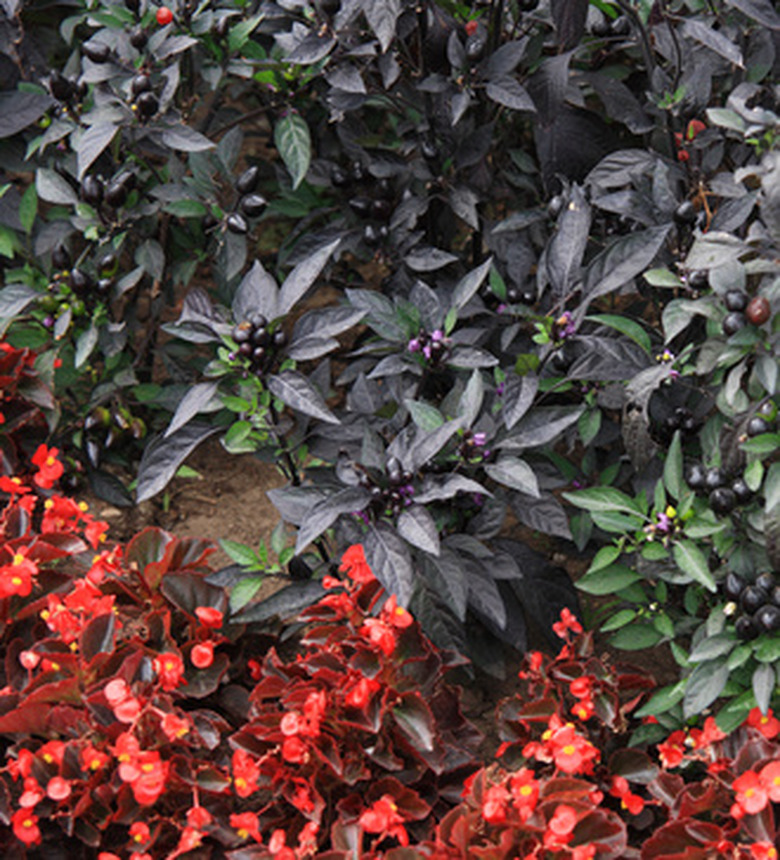Wild Berry Plant Identification
Wild berries grow just about everywhere. However, it is important to know which berries are edible and which are poisonous. Never eat any wild berry unless it can be positively identified as safe. Always check and recheck the plants to identify them before eating them. Wild berries can be identified in a number of ways: types of leaves, types of fruit, and when and where the wild berry is growing.
June Wild Berry Plants
Blackberries, also known as brambleberries, are found on prickly or bristly shrubs. The leaves are 2 to 10 inches long with three to five leaflets on the stem. The leaflets are usually green or red with a five-petal white flower followed by juicy red or black fruit. The plant produces fruit from June to October. Brambleberries are found in sunny, thick gatherings of trees and plants called thickets.
- Wild berries grow just about everywhere.
- Wild berries can be identified in a number of ways: types of leaves, types of fruit, and when and where the wild berry is growing.
Huckleberries can be high or low shrubs. The leaves are curved, short-stalked, and toothless or very fine-toothed. Twigs are a greenish or reddish color and slender, often zigzagged. The flowers are shaped like bells. They can be white, pink or green. The fruit is black or blue with a glossy or white powdery look. The ends of the berries form a starlike shape with five points. Huckleberries are found in wet and dry acidic soils, bogs or thickets, and woods. The huckleberry plants produce delicious wild berry fruit between June and September.
- Huckleberries can be high or low shrubs.
- The ends of the berries form a starlike shape with five points.
July Wild Berry Plants
The common spicebush is a slender, scented shrub or small tree. The leaves are 2 to 6 inches long. They are scented, thin and toothless with a very fine hairy feel. The twigs are smooth, black, slim and brittle. The flowers grow in clusters of yellowish flowers that grow in front of the leaves in the spring. The wild berry fruit is a red oval berry with a single seed and a nice aroma. The spicebush plant can be up to 12 feet tall. Spicebushes can be found in damp woods and stream sides. They produce fruit between July and September.
- The common spicebush is a slender, scented shrub or small tree.
- Spicebushes can be found in damp woods and stream sides.
August Wild Berry Plants
Sassafras trees can be 10 to 50 feet high. The leaves are 3 to 9 inches long and are toothless and oval. The leaves can have two or three lobes, and all leaf shapes can be found on the same tree. Twigs are green and the mature bark is a reddish brown. The wild berry fruit is small, blue and on red stalks. Sassafras trees are found in old fields and borders of the woods. They produce fruit in August and September.
- Sassafras trees can be 10 to 50 feet high.
- The wild berry fruit is small, blue and on red stalks.
September Wild Berry Plants
Common geenbrier is a vine with broad, round or heart-shaped leaves with small margins between them. Stems are rounded, sometimes angled. The wild berry fruit is blue or black, covered with a light powder, and it has two seeds. Common greenbrier can be found in woods and thickets. It produces fruit from September to early spring.
The bull brier is similar to the common greenbrier, but the plant is shrubby and the leaves are leathery. It is found in the same areas as the greenbrier. The Laurel greenbrier is a vine with leathery leaves growing much higher than the common greenbrier. It has the same types of leaves but grows in swamps and bottom lands.
- Common geenbrier is a vine with broad, round or heart-shaped leaves with small margins between them.
- The Laurel greenbrier is a vine with leathery leaves growing much higher than the common greenbrier.
Poisonous Wild Berry Plants
Night shade is a weak, woody vine capable of trailing over bushes. The flowers have five curved, violet petals with beaklike yellow antlers. Leaves usually have two small lobes at the base. The wild berries are drooping clusters that start out green and then turn bright red. Night shade plants are found in thickets and clearings, bearing fruit from August to May.
Moonseed is a climbing vine with green twinning stems. The leaves are 5 to10 inches large and sometimes round. They are pointed at the tip and sometimes have three to seven shallow lobes. The leaf base is not attached to the leaf stalks. The drooping clusters of white flowers turn into grape-size black fruit, with a light powdery look. These wild berry plants are found in moist thickets and woods and sometimes by streams. They produce fruit in September and October.
- Night shade is a weak, woody vine capable of trailing over bushes.
- Night shade plants are found in thickets and clearings, bearing fruit from August to May.
- Moonseed is a climbing vine with green twinning stems.
References
- USDA Forest Products Laboratory: Berries and Wild Fruit
- "Peterson's Field Guides: Edible Wild Plants"; Lee Allen Peterson; 1977
- "Edible Wild Plants: A North American Field Guide"; Thomas Elias and Peter Dykeman; 1990
